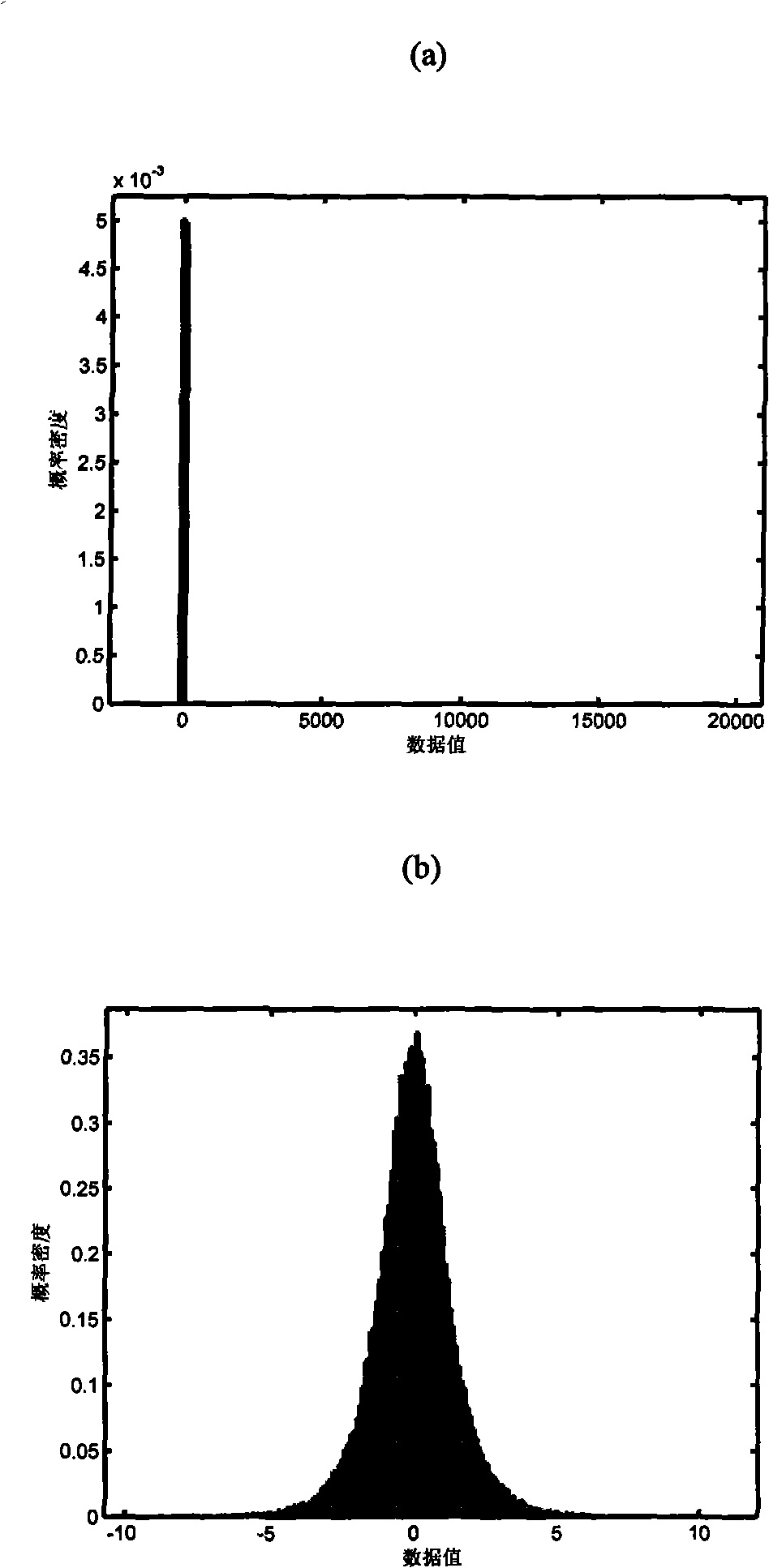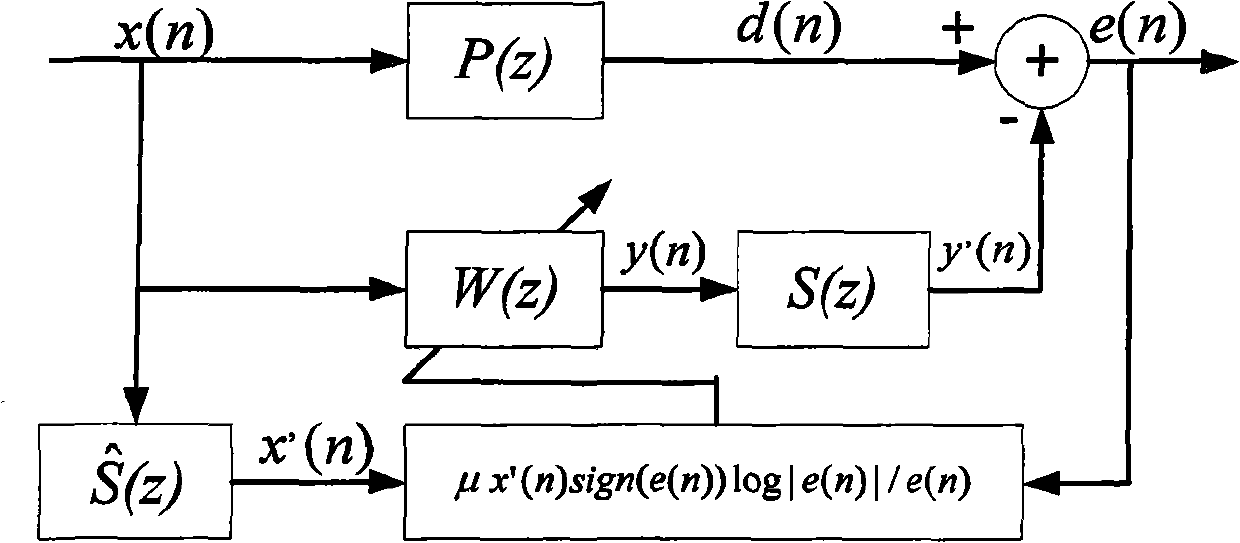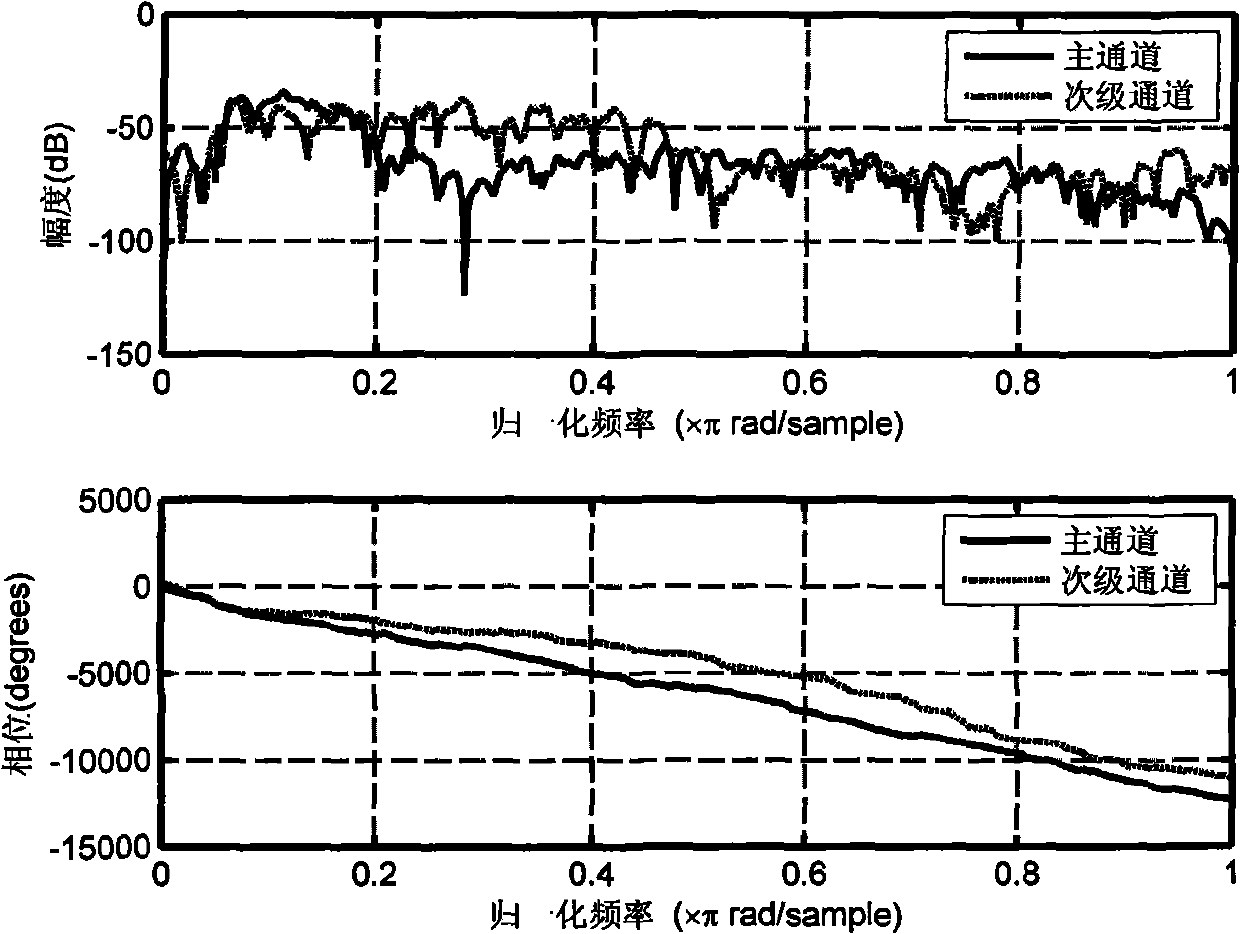Pulse noise active control method based on logarithm conversion
A technology of impulse noise and logarithmic transformation, applied in the direction of impedance network, adaptive network, electrical components, etc., can solve the problems that are not suitable for impulse noise active control, etc., and achieve practicality, good robustness, and good noise attenuation performance Effect
- Summary
- Abstract
- Description
- Claims
- Application Information
AI Technical Summary
Problems solved by technology
Method used
Image
Examples
Embodiment Construction
[0022] The present invention will be described in detail below with a numerical simulation experiment of single-channel feedforward impulse noise control.
[0023] 1. System configuration
[0024] figure 2 is a block diagram of a logarithmic transform-based single-channel feed-forward active noise control system. It consists of a reference microphone for obtaining a reference signal x(n), an error microphone for obtaining an error signal e(n), and a secondary sound source for generating a secondary signal y(n) to cancel the main noise d(n) . Here x'(n) is the estimated value of the reference signal x(n) passing through the secondary channel S(z) After filtering, W(z) is an adaptive filter.
[0025] 2. Experimental conditions
[0026] The orders of the finite impulse response filter (FIR) of the main channel P(z) and the secondary channel S(z) used in the experiment are 800 and 250 respectively, and their frequency responses are as follows: image 3 As shown, here we se...
PUM
 Login to View More
Login to View More Abstract
Description
Claims
Application Information
 Login to View More
Login to View More - R&D
- Intellectual Property
- Life Sciences
- Materials
- Tech Scout
- Unparalleled Data Quality
- Higher Quality Content
- 60% Fewer Hallucinations
Browse by: Latest US Patents, China's latest patents, Technical Efficacy Thesaurus, Application Domain, Technology Topic, Popular Technical Reports.
© 2025 PatSnap. All rights reserved.Legal|Privacy policy|Modern Slavery Act Transparency Statement|Sitemap|About US| Contact US: help@patsnap.com



